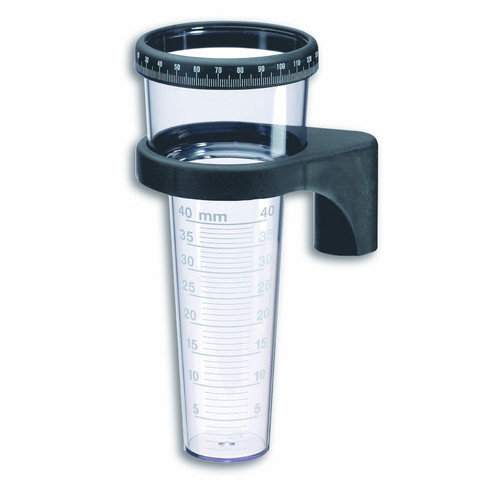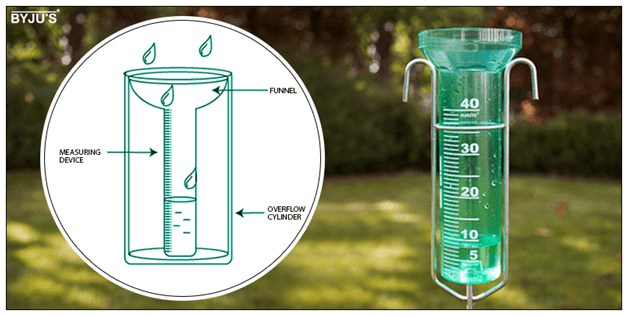Rain Gauge Acquiring Guide: What You Need to Know for Ideal Efficiency
Rain Gauge Acquiring Guide: What You Need to Know for Ideal Efficiency
Blog Article
Introducing the Science Behind Rainfall Gauges: How These Devices Play a Crucial Function in Climate Research Study and Environmental Surveillance
Rain gauges, apparently simple devices, hold a profound importance in the realm of climate research and ecological tracking. As we peel off back the layers of this clinical veil surrounding rain gauges, we uncover a globe where accuracy, information accuracy, and careful monitoring assemble to reveal a deeper understanding of our changing climate and its influence on the planet.
Relevance of Rainfall Gauges
Rain gauges play a crucial role in tracking and gauging rainfall levels, providing vital information for environment research study and analysis. These tools are essential in quantifying the quantity of rainfall that takes place in a certain area over a particular period. By collecting and determining rainwater, rainfall assesses offer valuable understandings into the circulation and intensity of precipitation, assisting meteorologists, hydrologists, and climatologists in comprehending weather patterns and patterns.
One of the vital reasons rainfall assesses are essential is their capacity to offer local and accurate information. Unlike satellite or radar-based measurements, which use wider observations, rainfall gauges deal precise info particular to the area where they are positioned. This localized data is crucial for various applications, consisting of flooding forecasting, drought monitoring, and water resource monitoring. Additionally, long-lasting information collected from rain assesses aids in evaluating environment change effects and patterns, adding considerably to clinical study and decision-making processes. In significance, rainfall determines offer as important tools in the field of weather forecasting and environmental scientific research, playing a vital role in progressing our understanding of climate and environment dynamics.
Types of Rain Gauges

Functionality and Procedure
In the realm of environment research and atmospheric research studies, the performance of rain determines lies in their complex functionality and specific operational devices. Rain gauges are made to precisely measure the quantity of precipitation that drops over a particular location during a collection period.
The performance of rain assesses is based upon the principle of collecting and gauging rain in a standardized way. This collected information is critical for recognizing regional weather patterns, tracking lasting climate trends, and evaluating ecological effects. To guarantee accurate dimensions, rain evaluates requirement to be purposefully positioned in open areas far from blockages such as buildings or trees that might hinder the collection process.
The functional facet of rainfall determines involves routine read review upkeep to stop debris build-up, calibration checks to keep measurement precision, and information recording for analysis (rain gauge). Overall, the performance and operation of rain assesses are crucial for collecting dependable precipitation data important to climate research and environmental monitoring
Role in Climate Research
Given the crucial significance of accurate precipitation measurements in understanding climate patterns and ecological influences, the duty of rainfall assesses in climate research is essential. Rain gauges give crucial information for environment research study by quantifying the amount of rainfall that tips over a certain area during an offered duration. This data is crucial for keeping track of long-term fads in rainfall patterns, evaluating the impact of environment adjustment on rains distribution, and improving environment designs.

Environment researchers utilize data accumulated from rain gauges to examine variations in rainfall levels, determine local environment fads, and examine the effectiveness of water source management methods. By contrasting historical rainfall information with current measurements, scientists can find shifts in precipitation patterns, such as adjustments in the frequency or intensity of rainfall occasions. This details is important for recognizing how environment adjustment is influencing precipitation characteristics and can aid policymakers make informed choices concerning adjustment and reduction techniques.
Applications in Environmental Surveillance

In flood forecasting, rainfall scale information assists to track rainfall intensity and circulation, permitting authorities to issue timely warnings and take required steps to alleviate flooding dangers (rain gauge). Dry spell tracking depends on rain scale information to analyze dampness levels in the soil and track rainfall deficiencies, check that assisting in the identification of drought-prone locations and the application of drought feedback methods
Furthermore, rainfall scale data plays an essential duty in water resource management by supplying information on water schedule and usage trends. This information is used to make enlightened choices concerning water allowance, preservation actions, and sustainable water source planning. Additionally, in farming, rain scale data helps farmers in optimizing watering schedules, crop option, and general ranch management methods based on regional rainfall patterns. Overall, rainfall gauges are vital tools in ecological monitoring, providing beneficial insights that add to informed decision-making and sustainable source management.
Conclusion
To conclude, rain evaluates are vital devices for determining rainfall, supplying beneficial information for environment study and ecological tracking. With different kinds and performances, rain evaluates play a vital function in recognizing rainfall patterns and their influence on the atmosphere. By precisely measuring rainfall, these gadgets contribute to the improvement of clinical expertise and assistance in making notified decisions pertaining to water source administration and catastrophe readiness.
Rainfall gauges helpful hints play an indispensable duty in tracking and determining rainfall levels, giving vital data for environment research study and analysis. The conventional rainfall scale, known as the "tipping container" gauge, is one of the most typically utilized tools. Ultrasonic rainfall assesses usage audio waves to discover the visibility of rainfall, supplying real-time data on precipitation levels.Environment researchers use information gathered from rainfall evaluates to assess variations in precipitation degrees, recognize local environment trends, and evaluate the efficiency of water source management approaches.In verdict, rainfall determines are crucial devices for determining precipitation, offering beneficial data for climate research study and environmental tracking.
Report this page